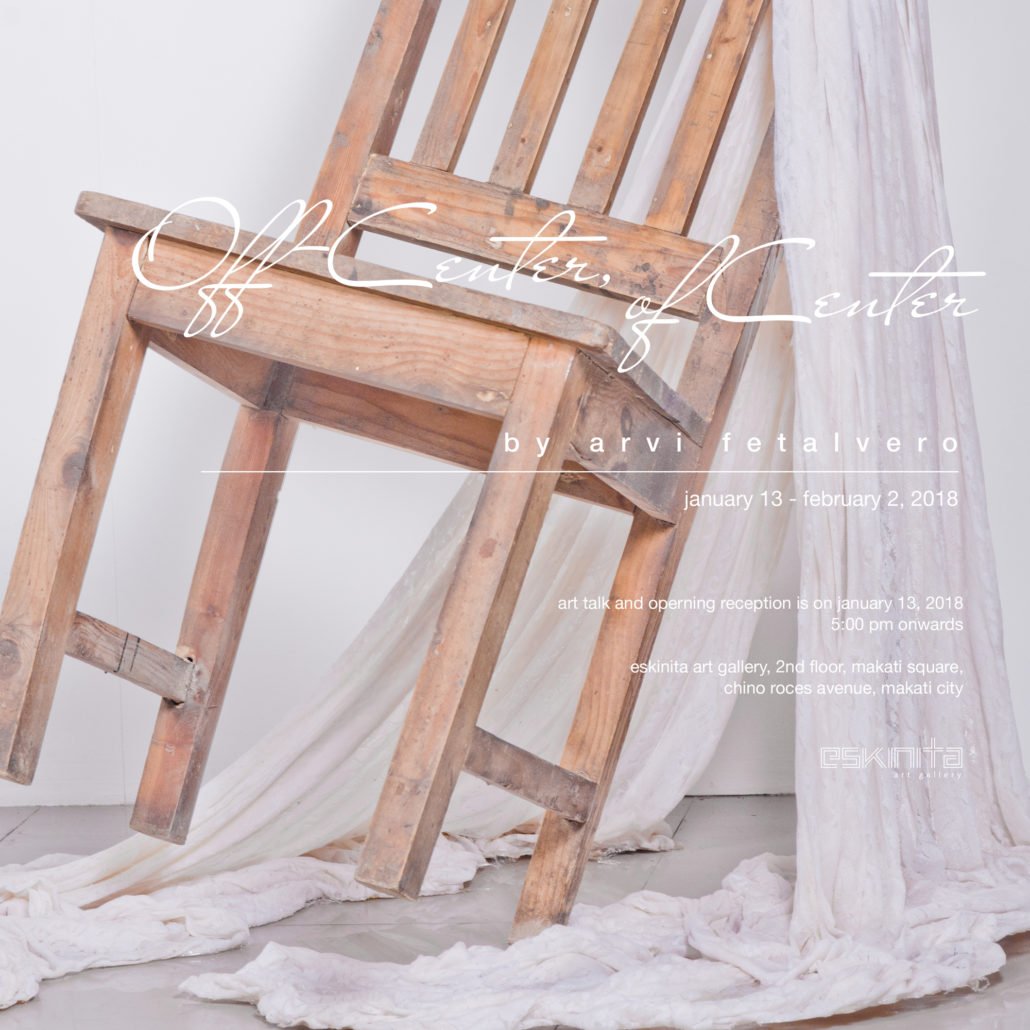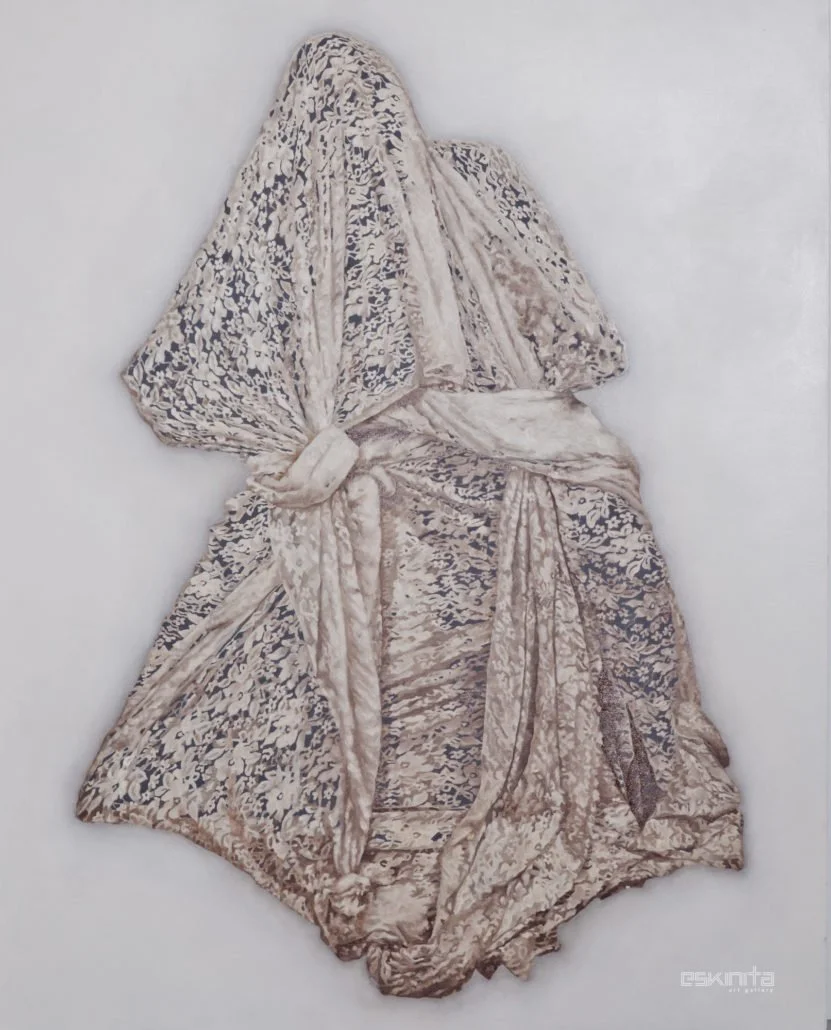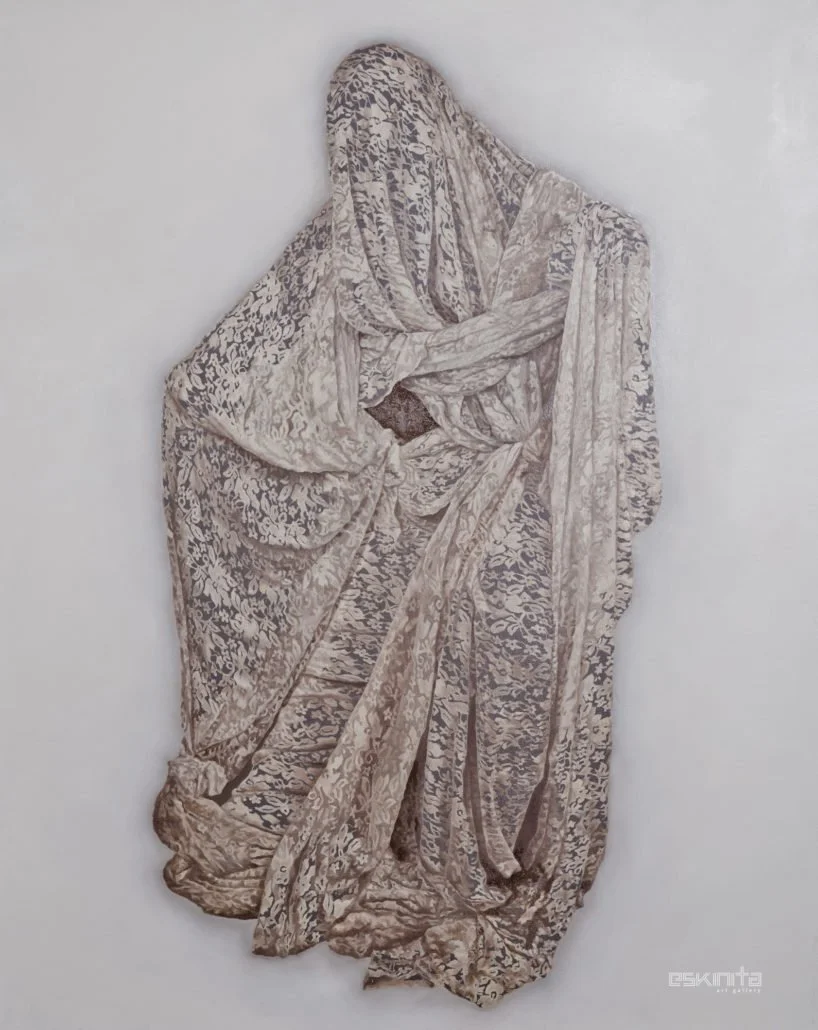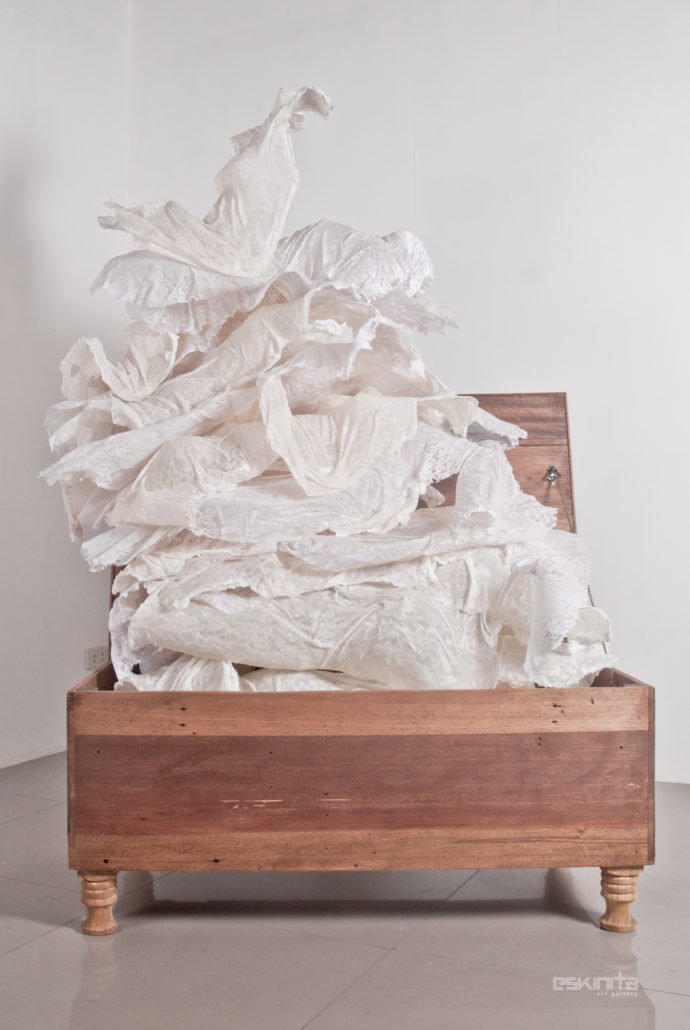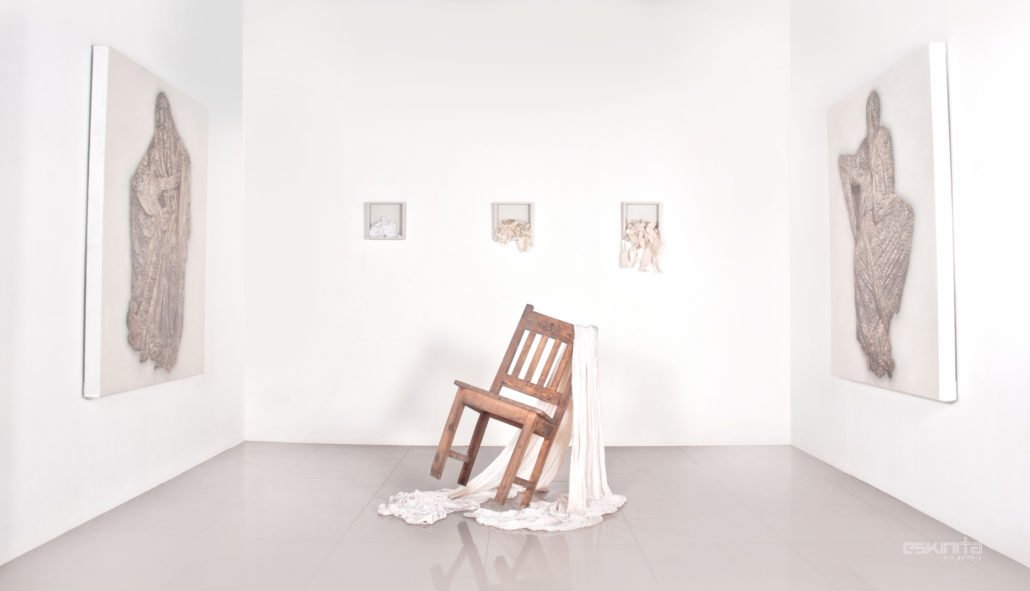
Off-Center, Of Center
Arvi Fetalvero
January 13 to February 2, 2018
In her first solo exhibition titled Off-Center, of Center, artist Arvi Fetalvero invites the viewers to temporarily gaze away from the center, to look at the side lines, to see what happens in the periphery. She shares how the proverbial center has affected her and how she reacted as one who have experienced being outside the establishment, who does not register on the radar of the mainstream and who, in more than one occasion, was compelled to be unorthodox in her approach to things.
Using lace, a material that the artist has used extensively in her previous works, as the prominent motif of the exhibition, alternatingly presenting it as a subject in a painting or as an actual resin-soaked fabric, she relays her experiences in visual metaphors.
For the works titled Periphery series and Interlude 28, the artist depicts lace as a form of skin that develops like a natural adaptive mechanism in reaction to her environment in an attempt to reconcile how others perceive her and how she defines her own self. This skin becomes a kind of persona that she wears as a compromise, as if the surface of her true self comprised of her personal ideals calcifies as it comes in contact with the atmosphere of external expectations and perceptions from other people. In the Periphery series, she depicts a scenario in which the imposed definitions of herself born out of compromise no longer fit what she has become presently and at that moment she feels constricted by them. Eventually the breaking point will come and like a snake shedding off its old skin, she deliberately removes them.
However, also like a snake, this process will recur many more times in her lifetime. This fact she expressed in Interlude 28, an installation piece composed of multiple casts of the artist’s body formed from lace and stacked one on top of the other in a wooden trunk. This work is a conceptual descendant of the performance component of her early work titled Peeling Onion Skins, in which she covered herself with patches of paper mixed with glue and invited people to peel the pieces off her. But while in her performance she lets people keep the shredded pieces, the installation is a symbolic collection of her old sheddings. Fetalvero keeps them, so that, according to her, she can revisit them and in a way, learn from her old self. This call to mind the image of yet another creature, the ouroboros – a mythical serpent that consumes its own tail; the past nourishing the present, ad infinitum.
The never-ending cycle is also alluded to in another work titled Mutable Constant, a painting of a draped lace fabric, the other end of which, presumably its source, is not visible as it is cut off by the pictorial space implying an endless supply of impending struggles.
Somewhat echoing Interlude 28 in terms of collecting debris brought by struggles and transformations, the work Collateral is comprised of supposedly waste materials that came from the course of the artist’s art production. It is made up of collected fabric trimmings, used gloves and bits of gauze which the artist placed in shelves like a shrine to discarded materials. In this work, the artist pays homage to all the time, effort and resources which she had invested but has not produced any substantial work.
Another key theme among Fetalvero’s works is tension, which she expressed at different levels, but arguably most apparent in the sculptural piece Oblique, and the floor piece painting titled Life Line. In Oblique, the tension is obvious in the imagery of a chair tilting precariously on one side, like a scene paused at exactly the right time before its fate is revealed. This the artist did to impart the experience of feeling of being neither here nor there, or the uncertainty of success or failure especially on the brink of a major transformation.
The work Life Line, on the other hand, depicts a rope of entwined lace pulled taunt on both ends. While it represents a situation wherein one clings to that last strand of hope, or sanity, or life, it can also be seen as a representation of being engaged in a tug-of-war with fate with one’s future on the line. Tension articulated on the work is intensified by the feeling of uneasiness that arise from the fact that it is placed on the gallery floor without any protection and can easily be damaged by the feet of the viewers. This is done intentionally by the artist to highlight the idea that in looking at the center, one might neglect to be mindful of the peripheral, or of those at the bottom.
In telling her story of how one moves about in the periphery, the artist placed great attention to handling the space that is allotted to her. As in the case of Beside the Point and Life Line where in their impact in relaying their message was amplified by their specific location within the gallery space. Fetalvero relished in the autonomy given by having access to a space where she can weave her own story using her artworks. This is a far cry from when she had limited access to spaces which she can explore her own ideas, another consequence of being in the periphery.
This exhibition however is not in any way a culmination, or a final victory as the artist claims her own space. For Fetalvero, this exhibition is just a survey of her journey so far, and an anticipation of what she would most likely encounter in the future. By creating her own space, her own version of the center, and as she invites the audience to enter and share her space, she proposes an alternative focal point, albeit away from the center but can be just as significant.
–Ioannis Sicuya

